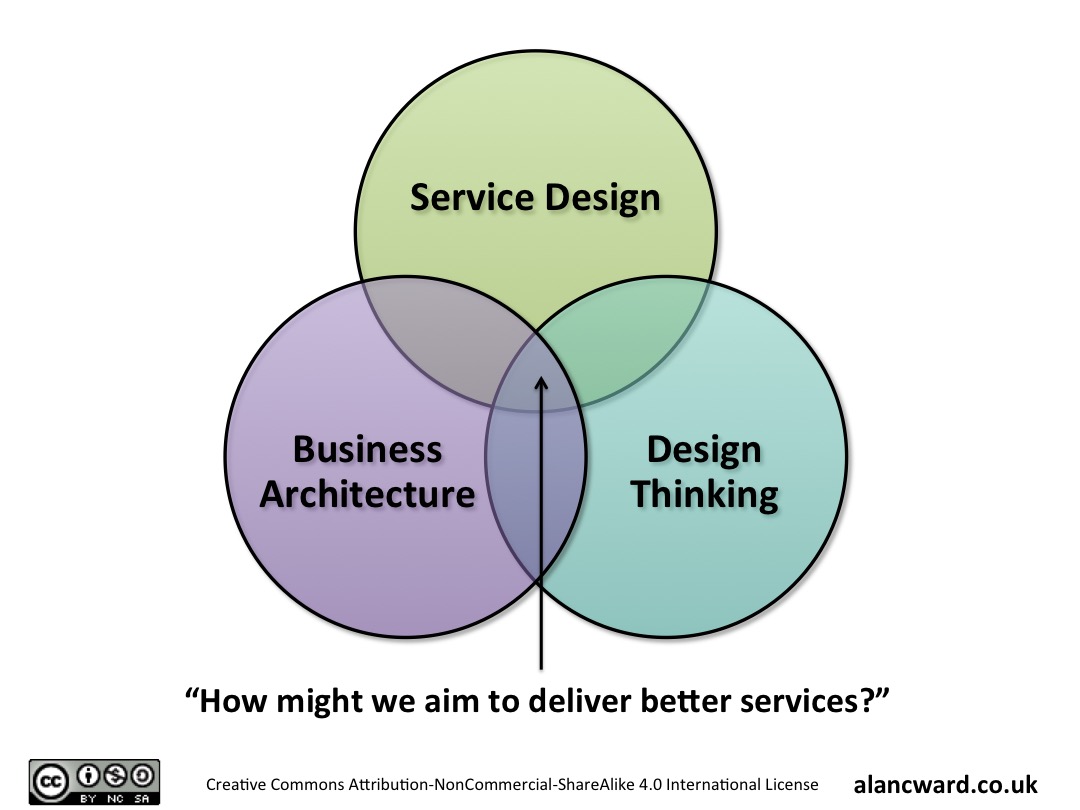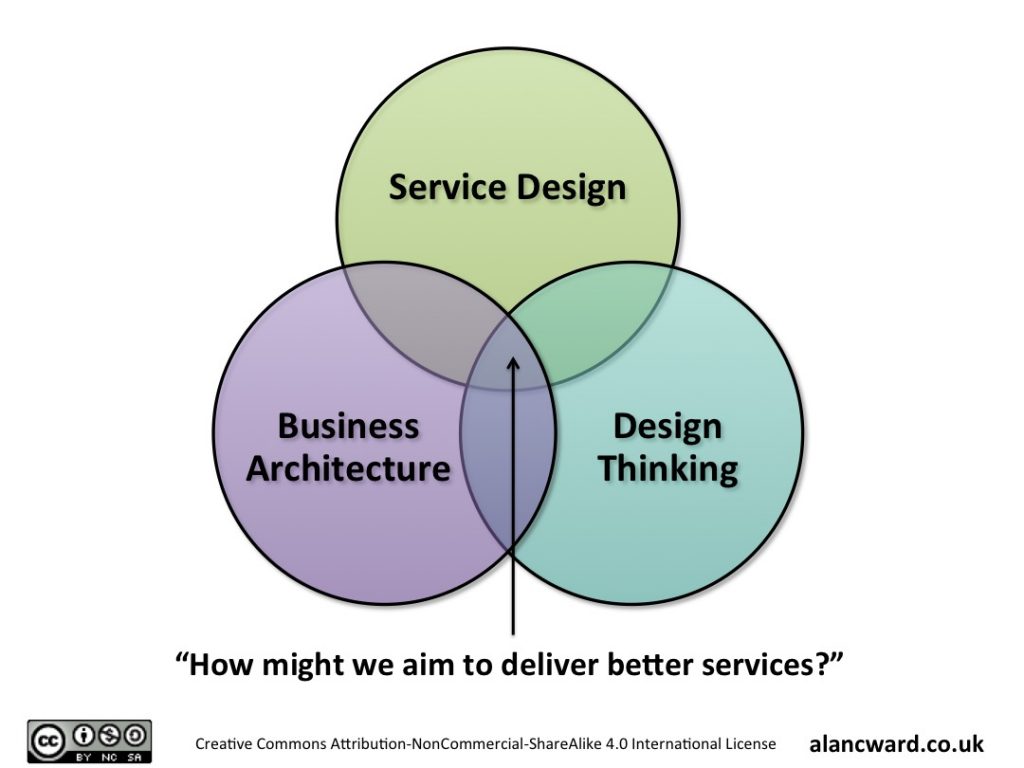How Might We Apply Service Design to the Enterprise?

I simplistically take the view that Service Design is the concepts and methods of Design Thinking applied to making services work better for their customers. It’s a definition that works in the circles I most commonly move in, i.e. directors, programme directors, etc. It allows me to set the stage in which service design and design thinking both play.
However on the same stage, we commonly find KPIs, OKRs, Business Architecture, etc. And the stage starts to look crowded very quickly. We also start to see people pulling in different directions, like someone has let a mouse loose in the chorus of an Italian opera.
Operas and plays have directors, often many directors each responsible for their own domain, but with one artistic director responsible for the overall vision.
Envisioning
Now imagine what would the stage look like if the director asked the question “How might we…..?”.
It’s the opening line of many a design thinking ideation round. And it serves many purposes, explained better by others elsewhere.
Taking the stage analogy further, I hear questions such as “How might we produce more colourful costumes?”, “How might we light the back of the stage better?”, “How might we fill this part of the stage?”.
All of them are good questions and relate to the specific problem that has been uncovered during the discovery phase.
What they’re not doing is thinking of the entirety of the show. They just resolve the problem that was uncovered for their part of the show.
How might we approach this differently?
What they’re not doing is asking “How might we aim to deliver a better show?”
Let’s look at that question more thoroughly.
It’s got the typical format of “How might we…?” introducing the concepts of inclusion, a shared problem, and an indication of possibilities and potential.
I didn’t stop at the simpler question of “How might we deliver a better show?”. That’s where service design typically fits.
If we step back from the stage and consider an organisation, even applying service design in this way would be a stretch. At this scale, we’d be trying to apply service design to the whole organisation, e.g. how might we deliver better services? Where typically each service would have its own change activity, often in the form of design sprints, etc. Instead, the simpler question of “how might we deliver a better show?” could be translated into a top-down design question for an organisation of “how might we deliver better products and services?”, “how might we become a better organisation?” or similar organisation-wide design questions.
However, the question I introduced earlier focusses on the aim, not necessarily the end result. It asks about how might we aim to deliver. In focussing on the aim, it allows us to explore the goals and how goals are set. It leads us to question what goals would be required in order to deliver a better show. In understanding the goals, we have to understand what good looks like, what counts as successful and not just in the eyes of the board, but in the eyes of customers. If we set the concept of goals smart enough, this could easily set the scene for continual improvement.
Alignment with Business Architecture
Back to the organisation, now that we’re asking about the aims, and we’ve looked at the goals, we can start to see how the goals for the enterprise could be set. This brings Service Design up to the area where it aligns with Business Architecture. While this may seem at odds with a top-down approach of setting KPIs, we have to ask the question of why wouldn’t we want to develop an organisation that is driven by achieving its goals that deliver value to customers?
Alternative Business Motivation
By combining Business Architecture with Service Design, there is the possibility of redefining the concept of Business Model Modelling. Typically that’s a top-down approach, modelling external influencers, assessments, goals, objectives/outcomes, etc. Taking the combined service design/business architecture approach would result in metrics that matter to customers as the metrics percolate up through the organisation, not cascade down as is more common.
Whereas the concept of One Metric That Matters may suit startups as they redefine/focus on a different metric per stage of development and growth, it would not be expected to change as often in a more mature organisation. Instead, we may see a single metric that is of most interest for a cycle of improvement. But here’s the clincher – that metric would be an aggregate of the metrics defined by exploring the problem space with customers, not one that’s defined by an executive board.
However we may see a situation where an executive board decides to steer the organisation away from its current model towards a different business model. In that case, we would consider a more top-down approach.



Recent Comments